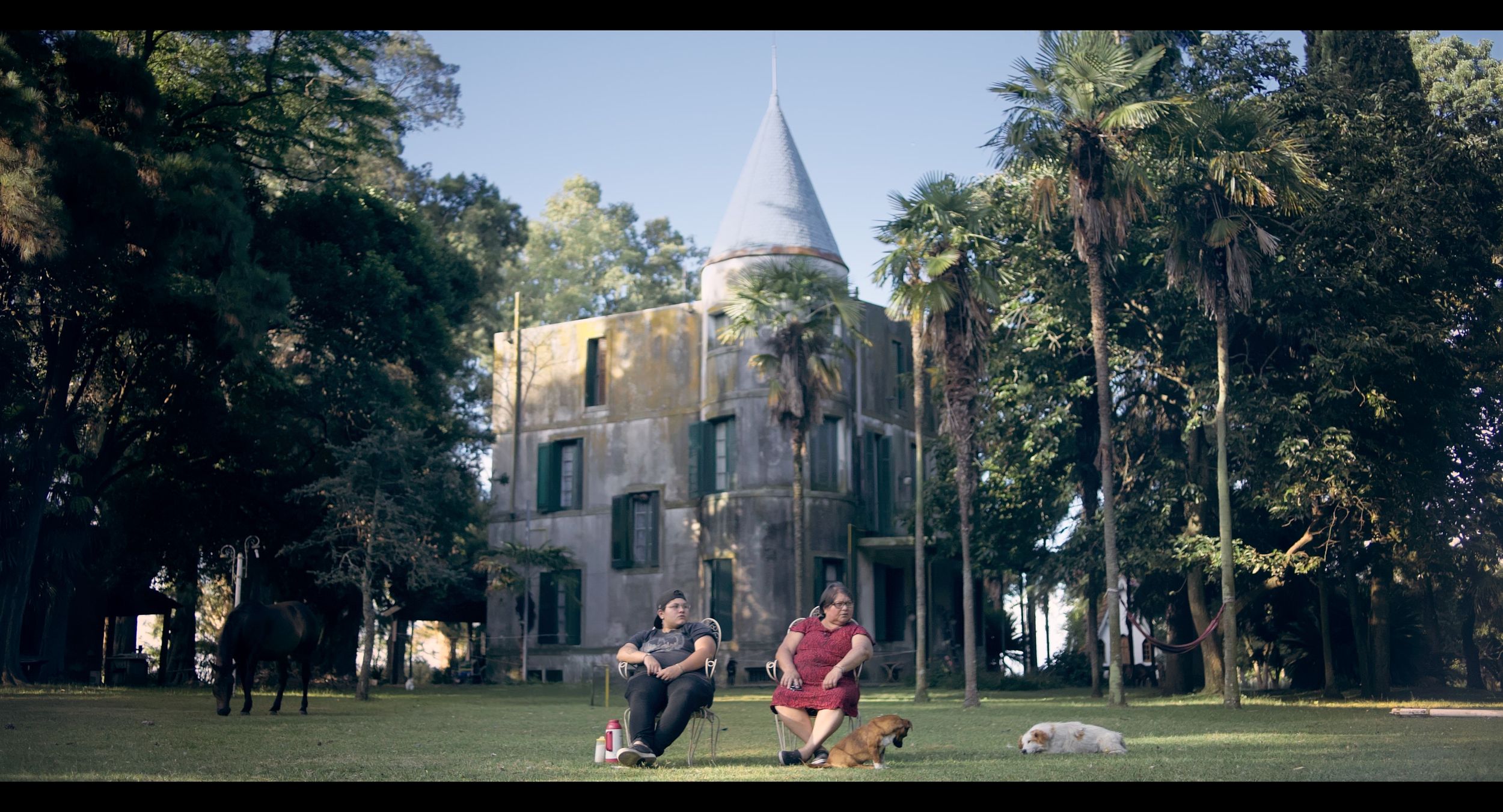
The Castle
Justina, now in her late 50s, lives with her queer daughter Alexia in a castle-like country estate on the Pampas of Argentina. Justina inherited this property from the family for whom she worked as a housekeeper. The only condition was that she would not sell it to anyone.
Inside, the cluttered but charming decor is all velvet upholstery and crystal glass. A little black lamb is left free to roam undisturbed. The paint is peeling, the walls are damp, and the drains are blocked. When a bill needs to be paid, yet another cow is sold. Only occasionally, when there’s something to be celebrated, do the descendants of the old family come and stay. Alexia has had enough of this way of life and wants to go to the city and be a car mechanic—or, even better, a race car driver.
In this hybrid film—part documentary, part fiction—the chief protagonists remain themselves as they re-enact events from their own lives. The result is a dreamlike parable about a mother-daughter relationship, racism, class, and decay. The jazzy 1950s-style music composed especially for the film perfectly complements the story being told.
Videos
Images


